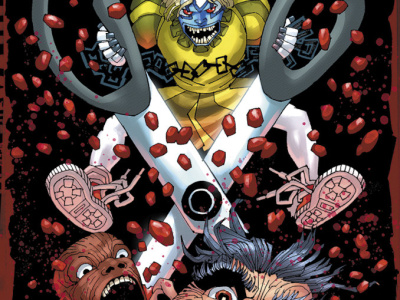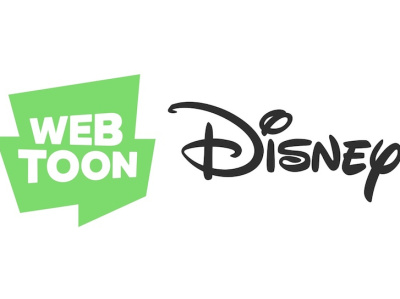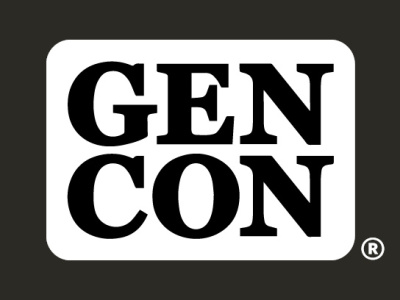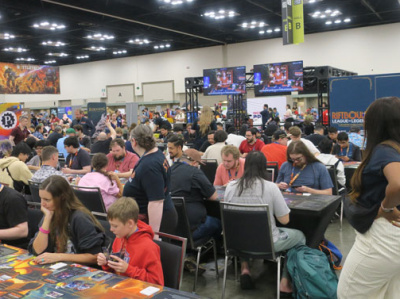Doing some data mining recently and talking with old friends at ComicsPRO has focused me on the inescapable fact that we’ve entered the era of the graphic novel. While periodical comics are still around, and still an interesting creative and commercial form, the graphic novel is a clear majority of sales. Even more important, it’s the format preferred by a large majority of purchasers of comics material who aren’t regular comic shop customers. Retailers looking to expand their customer base are well advised to pay more attention to the category.
Which brings to mind how graphic novels are retailed in comic shops. There’s a wide variety of display approaches: everything from purely spine out alphabetical to dedicated sections with full facings for favorite talents like Neil Gaiman or Alan Moore. Every shop has to figure out its own dynamics, of course, but a couple of thoughts come to mind:
First, we remain in the pattern that there are certain graphic novels which are clearly "gateway drugs." Ever since the beginnings of the graphic novel as a viable format in America, three decades ago, we’ve seen certain titles create new regular readers. Retailers would even offer hesitant customers a "try it, and if you don’t like it, I’ll give you your money back" deals. At the beginning, it was challenging because someone would wander in having heard of The Dark Knight Returns or Watchmen, and after the first taste there weren’t easy next choices to offer. But now, there’s a wide range of selections.
To best take advantage of this, perhaps a "start here" section is in order? A small section of full facing graphic novels that are proven gateway drugs, stocked perpetually with handselling instructions to the team to steer unfamiliar faces towards them? Experience with college students has taught me that many of your newer customers had their first exposure to graphic novels in a classroom, unsurprisingly with a list of titles headed by Maus, yet Art Spiegelman’s masterpiece is rarely displayed prominently in comic shops. And right now there’s no creator reaching more new readers than Raina Telgemeier. Old reliable gateways like Sandman belong on that rack as well, along with a titles tied to successful current film and television adaptations from comics.
There’s also the classic indie bookstore approach of having a “staff picks” section, with cute little handwritten cards pitching each chosen title. Comic shop staffers are exceptionally committed to the form, and can be very passionate in steering folks, but not everyone who wanders into a store speaks up, or is noticed if they come in at a busy time. This approach is perfect for the more introverted browser.
Finally, bear in mind that the large number of graphic novel only customers (as distinct from our vital and passionate core customers who scoop up periodicals, graphic novels and other categories) tend to shop less frequently than the Wednesday regulars. That argues for a section displaying the more interesting new graphic novels full facing for a longer time, perhaps a full month at least. Define "interesting" as you choose, but don’t expect the one or two graphic novel a month customer to be able to find the tree they don’t yet know they want in a forest of spines. At the very least, maybe a “New this month” list posted on the endcap of a spine-out section, with covers next to the titles and some basic info to invite discovery?
The good news is that word of mouth is a stronger sales tool than ever in the era of social media, but the bad news is that it’s not as favorable for the brick & mortar retailer as the online seller, since online can capture the impulse buy instantly. The advantage the physical store has is discovery, the joyful process of searching for what interests you. Research has proven that in many circumstances, humans get a bigger kick pursuing things than achieving them. Browsing in a comic shop or bookstore is a delight for many of us, but good retail practices can make it more likely to lead to unexpected sales.
--Paul Levitz has been active as a comic fan (The Comic Reader), editor (Batman), writer (Legion of Super-Heroes), executive (30 years at DC Comics, ending as President & Publisher), historian (75 Years of DC Comics: The Art of Modern Myth-Making), and educator.
--The opinions expressed in this column are solely those of the writer, and do not necessarily reflect the views of the editorial staff of ICv2.com.

Column by Paul Levitz
Posted by Paul Levitz on March 1, 2016 @ 4:40 am CT
MORE COMICS
From Image Comics
August 14, 2025
The Curse of Sherlee Johnson #3 debuts two iconic new variant covers from Frank Miller and Todd McFarlane, on shelves this September from Image Comics.
To Bring Marvel, Star Wars, Disney, and 20th Century Studios Comics to Webtoon Platform
August 13, 2025
The deal will bring comics from the Disney, Marvel Comics, Star Wars, and 20th Century Studios brands to the Webtoon platform.
MORE COLUMNS
Column by Scott Thorne
August 11, 2025
This week, columnist Scott Thorne notes a new twist in the Diamond Comic Distributors saga and shares his thoughts on the Gen Con releases that will make the biggest impacts.
Column by Jeffrey Dohm-Sanchez
August 7, 2025
ICv2 Managing Editor Jeffrey Dohm-Sanchez lays out the hotness of Gen Con 2025.








